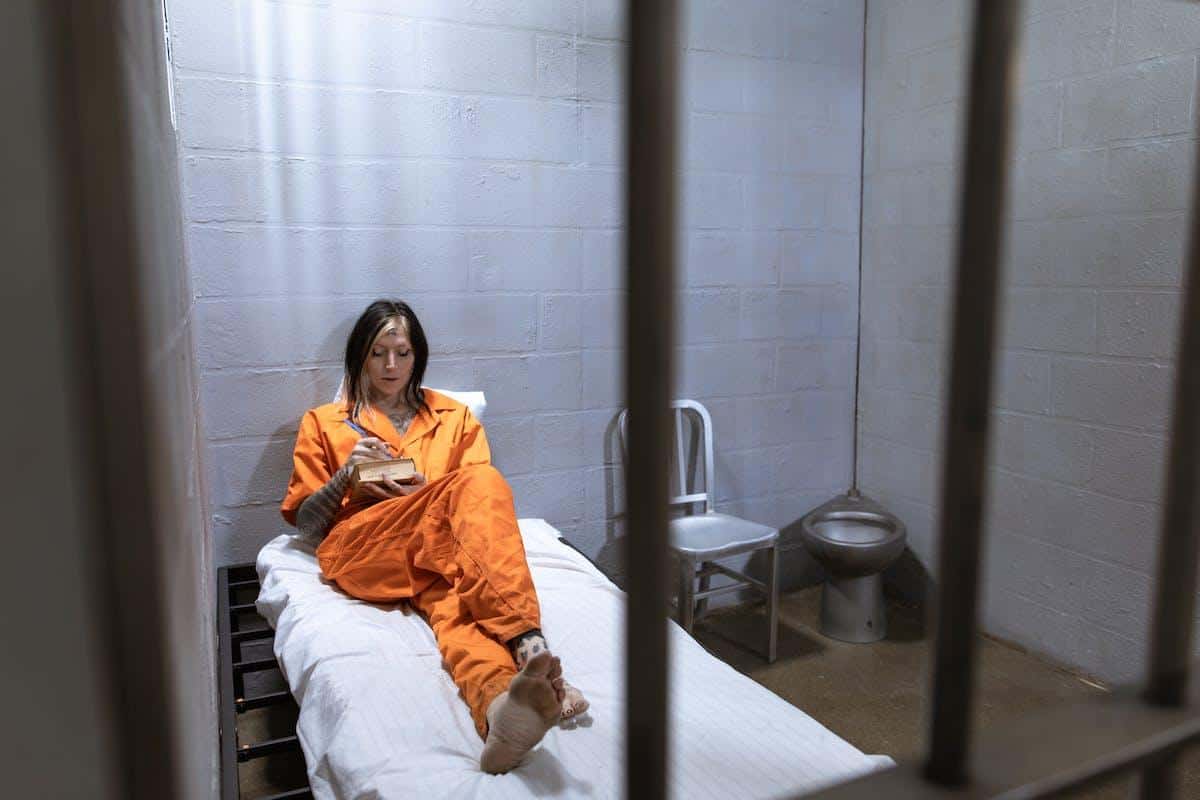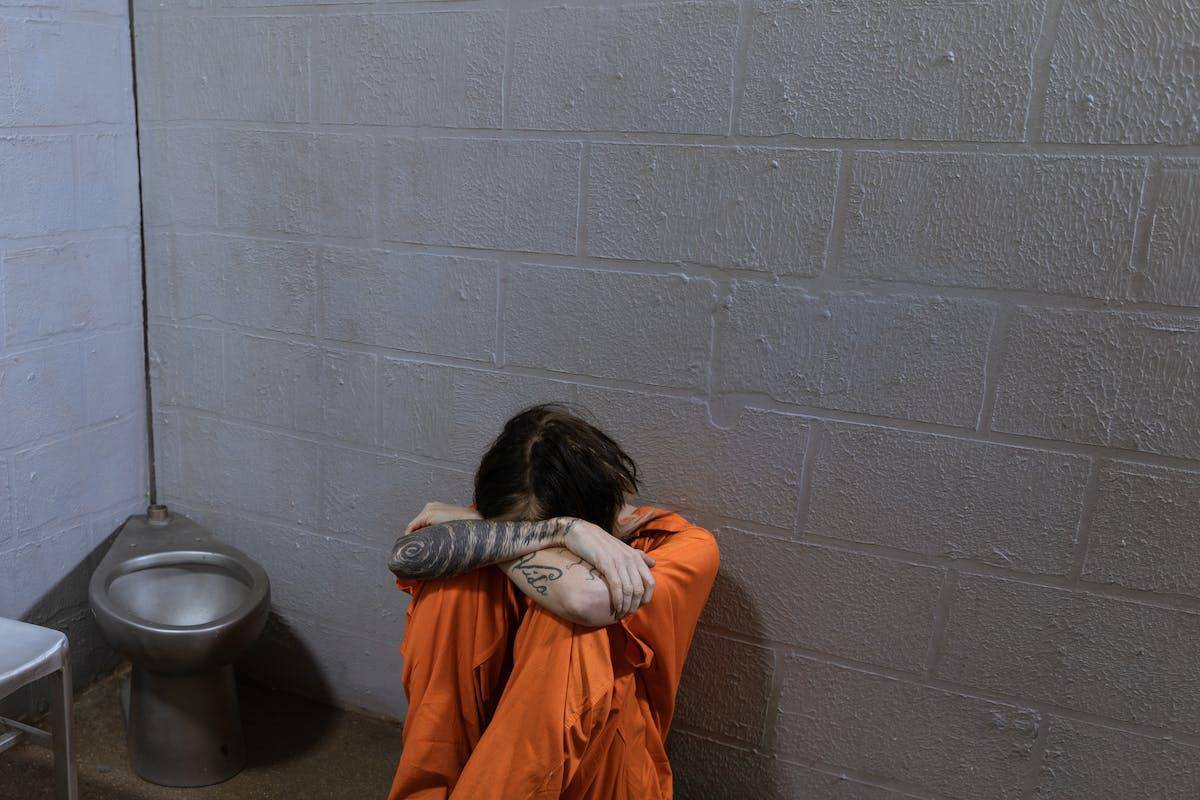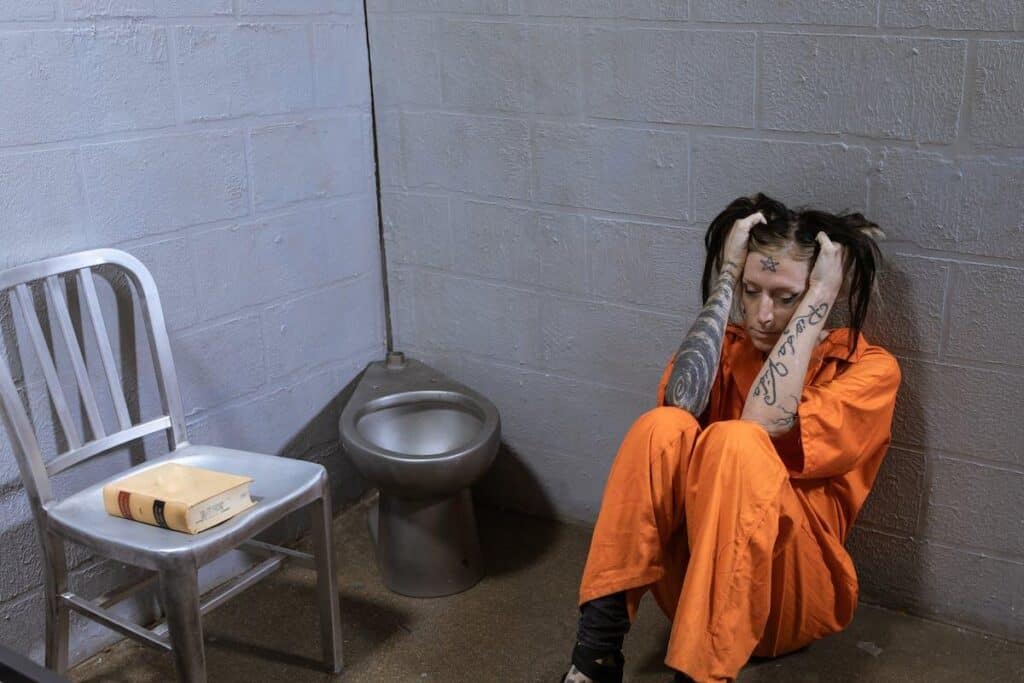It is crucial for citizens to understand the intricacies of the justice system, including the jail booking procedures Orange County CA operates under. Whether it’s relevant to you personally, a loved one, or simply out of an interest in knowing how our legal institutions function, this knowledge is power. As members of the Orange County community, it’s necessary to comprehend these rules and requirements that are part and parcel of law enforcement activity.
This article aims to demystify jail bookings, a vital yet often obscure element in the body of procedures once someone gets arrested. Focusing specifically on the stipulations adhered to in Orange County, California, both arrestees and their families can gain insights into what happens behind closed doors. This subject might seem intimidating or complicated at first glance; however, understanding doesn’t need advanced law degrees-just your time and undivided attention.
Through our step-by-step guide on jail booking procedures-which includes information gathering, mugshots, fingerprinting, searches-and debunking common myths surrounding them-we hope to shed some light on this area of criminal law. Furthermore, we’ll examine core aspects related solely to Orange County which differentiates it from other counties’ procedures.
An individual’s rights during these processes will also be discussed as they play a pivotal role within these procedures-knowledge about one’s rights aids in protecting those inadvertently entangled in criminal proceedings.
What Is Jail Booking?
Jail booking is a procedural action taken by law enforcement when an individual has been arrested and brought into custody. Essentially, it involves the recording of the arrestee’s personal information, details of the alleged crime, ensuring due procedure was met during the arrest, and commencing an institutional record for that individual. The process usually occurs at a county jail or detention facility and sets in motion further legal proceedings.
The booking procedures in Orange County, CA, like those elsewhere in the country, follow a specific sequence designed to maintain order and legality throughout. Firstly, basic identifying information about the arrestee is collected. This includes their full name, date of birth, physical appearance characteristics such as height and weight, any distinguishing features like tattoos or scars, as well as present contact details. It’s important to note that providing false information during this stage can result in additional charges.
Parallel to gathering these details are other activities aimed at documenting physical evidence relating to the arrestee and their crime. These include taking photographs – commonly known as ‘mugshots’ – and fingerprinting. Law enforcement uses these elements for identification purposes later on if necessary; they become part of both the local database and wider systems used by agencies across the country.
| Procedure | Description |
|---|---|
| Collect Personal Information | Gather name, date of birth, physical characteristics and contact details from the arrestee. |
| Mugshot Taking | A series of photographs taken from different angles for use in identification. |
| Fingerprinting | Collect fingerprints to assist with future identification processes or investigations. |
With these basics of jail booking outlined, it’s vital to remember that the specifics can vary from place to place. The following sections will go into further depth about the unique aspects of Orange County’s protocols.
Getting Arrested
After an arrest is made in Orange County, CA, there are several key steps taken by law enforcement that contribute to the overall jail booking process. Although these may vary slightly depending on individual cases and other variable factors, they generally adhere to a certain procedural guideline.
The first official step typically begins with a ride in the back of a patrol car to the designated jail or precinct. When the officers deem it safe and appropriate, those arrested will be evaluated for intoxicating substances or potential injuries, as this could impact subsequent processes.
The journey from the point of arrest to the jail facility could take anywhere from a few minutes to over an hour depending on variables such as location, time of day, and traffic conditions. During this journey, it is advisable for detainees, regardless of charges pressed against them, to maintain calm and cooperate with officers.
Upon arrival at the jail, individuals undergo formal admission into custody initiating what most people equate with “booking”. This process typically involves cataloging personal information like name, birthdate and physical characteristics; registering alleged offence(s); taking mugshots; fingerprinting; undertaking personal property inventory; conducting medical screening and placing detainees into holding cells until bail arrangements can be made or arraignment is called by court order.

It’s important to note that processing times can also vary significantly due largely in part to staffing resources within each department and fluctuating number of arrests.
| Process | Description |
|---|---|
| Ride to Jail | Transportation from point of arrest to detention facility. |
| Intake & Evaluation | Determining sobriety level and assessing any immediate medical concerns. |
| Booking Process | Collection of personal details, offense registration, mugshot photography, fingerprinting, and inventory of personal property. |
| Cell Assignment | Housing in a holding cell until bail or court hearing. |
Step-by-Step Through the Booking Process
In Orange County, CA, once an individual is arrested and transported to one of the county’s jails for booking, they will undergo a systematic process. This typically includes gathering personal information, documenting the arrest and charges, taking mugshots and fingerprints, conducting a thorough search of the person being booked, completing a health evaluation, and inventorying personal possessions.
The first stage is information-gathering. Law enforcement officers will record a variety of data that covers not only basic identification – such as name, birthdate and physical characteristics – but also details on next of kin or emergency contacts. They’ll then thoroughly document the circumstances of the arrest and any charges brought against the individual.
- Name
- Date of birth
- Physical characteristics like height, weight, hair and eye color etc.
- Next-of-kin or emergency contact information
- Circumstances leading to arrest
- Charges faced by the individual
Following that is mugshot photography. An arrestee’s photo is taken from both frontal and profile angles for their record file at this stage. Alongside this are fingerprints which are taken electronically these days and instantly entered into nationwide databases.
Lastly comes the in-depth process involving searches and health checks where all articles on person are surrendered upon booking except clothing items deemed necessary or suitable for jail attire. Officers perform thorough pat-downs to ensure no weapons or contraband makes it through into facility holding cells ensuring safety for all incarcerated individuals as well as personnel within corrections installments.
Additionally, any incoming inmates will undergo a brief medical screening during the booking process in order to document existing conditions or injuries, verify sobriety levels if suspected intoxicated behavior was involved with their arrest incident.
This step-by-step overview provides some insight into what goes on behind those heavy jail doors following an arrest scenario; although not inclusive resource considering each case carries unique elements impacting the arrest and booking process within the Orange County area.
Challenging Misconceptions
Myth 1: Everyone Gets a One Phone Call
However, under the laws overseeing jail booking procedures in Orange County, CA, there’s no mandated rule guaranteeing a single phone call. This could occur early on during the booking process or later down the line depending on the officer’s discretion and organizational policy.
Myth 2: Booking Officers Resort to Brutality
Another commonly held misbelief surrounding jail bookings is the notion that correctional staff members can force compliance through cruelty or physical abuse. The supposedly unchecked brutality by officers in Orange County jails is far from the truth. Like all detention facilities across America, they operate under stringent rules and guidelines outlined by both federal and state laws.
These regulations prohibit inhumane treatment and brutal force except where it’s genuinely necessary for safety purposes such as quelling violence or escape attempts. Ignoring these provisions can result in dire consequences for offending officers including criminal charges and job termination.
Myth 3: Personal Property Is Automatically Lost Upon Arrest
Lastly, another prolific misconception involves personal property post-arrest. Many people believe they lose all their personal items upon being arrested but this isn’t necessarily accurate for Orange County jails. During the booking process, your belongings are carefully documented and stored securely until your release or transfer to another facility.
You have the right to reclaim these items once you’re liberated unless they’re deemed contraband or tagged as evidence in ongoing investigations. Nonetheless, if your possessions haven’t been returned at release time for any reason, you usually have thirty days to recover them according to Orange County-specific policy directives.
Your Rights During the Booking Process
While it might seem intimidating, knowing your rights during the booking process can serve as a tool to navigate this complex system. In the United States, these rights are constitutionally protected, and they continue to hold in Orange County, CA.

The scope of your rights includes:
- The Right to Remain Silent: Commonly referred to as “Miranda Rights,” this principle safeguards arrestees from self-incrimination by allowing them not to answer any questions posed by law enforcement personnel. You may choose whether or not you want to speak and what facts to disclose.
- The Right to an Attorney: Another important provision is the right to legal representation. If you cannot afford one, the state has an obligation to provide a defense attorney for you. This right comes into play immediately after your arrest through all proceedings.
- The Right Against Unreasonable Searches and Seizures: Law enforcement must have probable cause or a warrant issued based on evidence before they can search personal items that are not within immediate attention. In many cases, officers will seize possessions such as clothing during booking; however, they cannot search or seize property without just cause.
It’s essential for anyone going through jail booking in Orange County, CA, or their loved ones, to understand that carrying these rights does not necessarily mean the situation will proceed smoothly. Law enforcement personnel might not always notify you about these rights immediately upon your arrest – often they are read at the first court appearance or arraignment.
Another crucial thing that needs understanding is invoking these rights. While remaining silent is straightforward enough – simply don’t talk – asserting your right to an attorney involves clearly stating this request. Any ambiguous or unclear statements may not necessarily be interpreted as you asserting this right.
Lastly, even though you have constitutional protections against unreasonable searches and seizures, this does not extend to ‘pat down’ searches for weapons or contraband during the booking process. In the interest of jail security, courts generally allow these searches under Fourth Amendment rights. Also, any belongings you have with you when arrested will generally be inventoried and stored by the arresting agency, which can include a search of items like bags and vehicles.
Overall, while the landscape of these rights seems challenging to navigate during such stressful time periods, knowing them well in advance can help maintain dignity and ensure a more fair legal treatment during the arrest and booking process in Orange County CA.
Special Considerations
Biometrics and the Orange County Booking Process
An intriguing aspect of the jail booking procedure in Orange County, CA is their extensive use of advanced biometric technology. The Law Enforcement agencies in this county employ innovative systems to collect, analyze, and store personal identifying information such as fingerprints of arrestees. Biometric identification technology plays a monumental role during both the booking process and for future arrests. This technological adoption underscores the priority Orange County law enforcement places on ensuring proper identification of individuals at all stages.
Unlike other counties that might rely solely on ink-and-paper fingerprinting methods, Orange County leverages technologies like Live Scan fingerprinting, which digitally captures fingerprints and cross-references them with a national database quickly. The data provided through this system aids swift identification of suspects who may have prior criminal records or outstanding warrants under different aliases or identities.
Medical Considerations for Inmates
In accordance with California state regulations, an outstanding feature in Orange County’s jail booking process concerns medical screenings. In addition to the basic physical health check conducted during intake, Orange County also provides mental health evaluations administered by qualified healthcare professionals immediately following booking. Many county jails conduct these checks after classifying inmates; however, conducting these assessments early enables the jail staff to immediately address any significant health concerns – be they physical or psychological – for every single inmate.
For example, if an inmate exhibits symptoms of substance withdrawal during intake screening, medical staff will swiftly implement detoxification protocols to mitigate any risks associated with withdrawal. If signs of significant mental distress are noted such as potential self-harm or suicidal tendencies, immediate precautions will be taken by relocating the individual to a more monitored environment and providing necessary psychiatric care.
Video Arraignment in Orange County
A unique practice adopted by Orange County’s justice system is video arraignments – a procedure less common elsewhere. Traditional arraignments require that the arrestee physically present themselves in court. However, the video arraignment practice followed in Orange County allows defendants to appear before a judge right from their jail cell using video conferencing, without having to be transported to an actual courthouse.
This practice streamlines the arraignment process and can expedite proceedings significantly, reducing the inherent anxiety of waiting for a court appearance and eliminating time-consuming transfers from jails to courthouses. These unique features – advanced technology use, immediate medical screenings and video arraignments – are distinctive aspects of the jail booking processes specific to Orange County, California.

Conclusion
Understanding the jail booking procedures in Orange County, CA is not only essential for individuals who find themselves on the wrong side of the law but also crucial for friends and family members. Having a solid grasp of these processes allows communities to be better informed about their rights within the confines of these procedures. This knowledge can lead to more efficient and less stressful encounters with the legal system.
We’ve uncovered many facets of jail booking in our exploration from arrest to the culmination of booking. We have gone over varying stages such as mugshots, fingerprinting, and searches all within the limits of an individual’s rights, including the Right to Remain Silent and Right to an Attorney. Understanding what exactly happens at each step can be incredibly empowering in a situation that typically feels out of an individual’s control.
In our journey through Orange County’s specific nuances, it also became evident that each county may have unique rules in place. While some procedures are standardized across California, others vary per area. Therefore understanding your local jail booking procedure becomes crucial for effective navigation. Just remember: Knowledge is power – no matter how trying or intimidating circumstances might seem, being informed about processes like this puts you one step ahead, towards empowerment and integrity preservation during challenging times.
Frequently Asked Questions
How Do I Book a Visit to Orange County Jail?
To book a visit to the Orange County Jail, you must first make sure you are on the approved visitor list of the person you wish to visit. Subsequently, you would need to register online through the jail’s official website or call their direct line during office hours.
After providing some necessary information (such as valid identification), you could then proceed to select your preferred date and time for the visit based on availability. The system usually processes requests quickly but it’s recommended to book at least 48 hours in advance.
How to Find Out if Someone Is in Jail Orange County California?
In checking if someone is in Orange County Jail, California, there are a couple of routes one can take. You can use the Orange County Sheriff’s department’s online inmate locator or directly call their inmate records division during regular business hours.
Enter or provide the individual’s name and other pertinent information to perform an accurate search. Confidentiality policies might apply so be prepared to explain your relationship with the person if required.
What Is the Orange County Repository?
The Orange County Repository is a centralized storehouse where public records and important documents pertaining to the county are archived for safekeeping and future reference purposes. This collection ranges from deeds and property records, court cases files, death certificates, marriage licenses among others. It is highly vital for record maintenance, historical referencing, legality checks and tracing genealogical roots.
How Do I Write an Inmate in Orange County Jail?
To write an inmate in Orange County Jail, ensure that all correspondence is addressed correctly with proper identification including full name and booking number allocated by the facility along with your return address. Keep your letter content appropriate as all mail is subjected to scrutiny by jail staff before reaching inmates for safety purposes.
Make sure not to send any prohibited items such as photographs without approval or cash through mail; rules do vary so it’s prudent to consult with jail policy guidelines beforehand.
What Do You Need to Visit Someone in Jail in California?
When visiting someone in jail in California, you’ll firstly want to ensure that you’re included within their approved visitors list – inmates typically submit this at admission. You’re required to carry a valid government-issued photo ID like a driver’s license or passport.
Arrival ahead of scheduled visitation time is recommended to complete necessary paperwork and security checks smoothly. Certain facilities might also require completed application forms or health screening questionnaires, thus it would be beneficial to check for specifics in advance on the facility’s visiting policy.
What Is the Dress Code for Visitation in Orange County Jail?
The dress code for visiting the Orange County jail involves restrictions around modesty and gang affiliation prevention. Clothing that exposes too much skin such as tank tops, short skirts/shorts, ripped jeans revealing skin, see-through garments or overly tight clothes are generally not acceptable.
Clothes displaying drug, alcohol or gang-related images/text are prohibited as well, along with colors signifying any specific gang association. It is usually best to dress conservatively with neutral colors while respecting cultural sensitivities.
What App Should I Download for GTL Video Visit?
For GTL video visitations you should download the “GettingOut Visits” app which is offered by Global Tel Link (GTL). This app allows inmates and visitors to have video visits from their own devices at an agreed scheduled date and time ensuring everyone’s privacy without compromising the supervisory requirements of corrections staffs.
How Do I Schedule a Visit to an Inmate in Florida?
Scheduling a visit to an inmate in Florida starts by confirming if you’re listed within inmate’s approved visitor list; unauthorized individuals can’t make bookings nor gain access into correctional facilities.
Once confirmed, either head over to the Florida Department of Corrections website or call their corresponding facility directly during office hours to book your visiting slot based on offered availability provided post-checking your identity from valid IDs presented.
